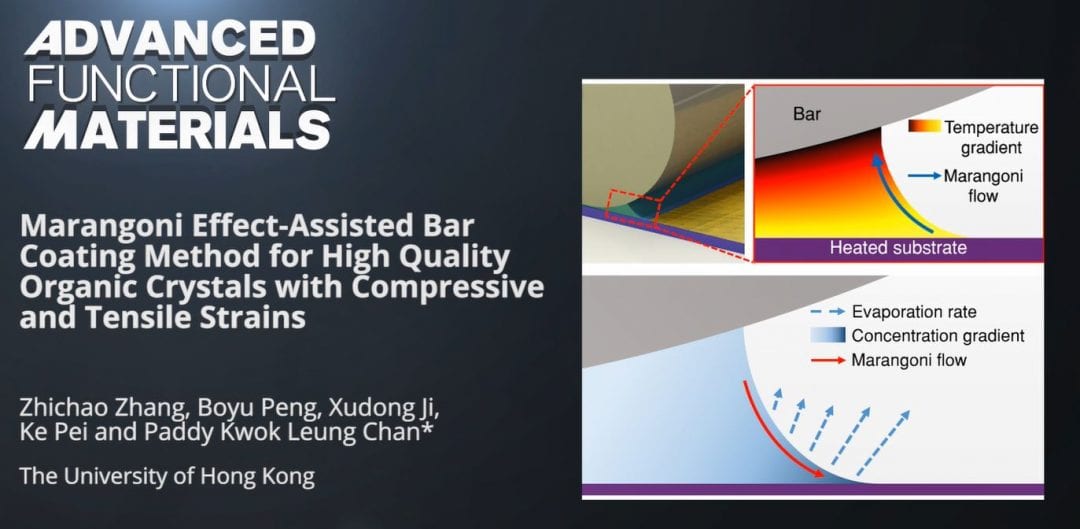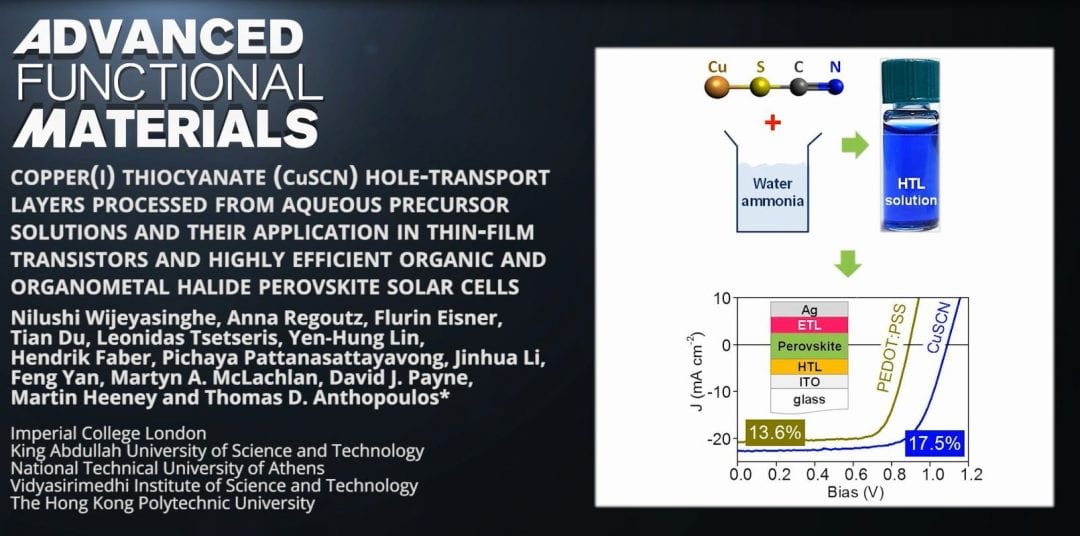Researchers from the University of Hong Kong report how solution shearing of organic semiconductor crystals is influenced by a surface tension gradient. Using a Marangoni-effect-assisted bar coating method, ultrathin, uniform layers of crystals with large domain sizes are obtained that show excellent performance in organic field-effect transistors.











